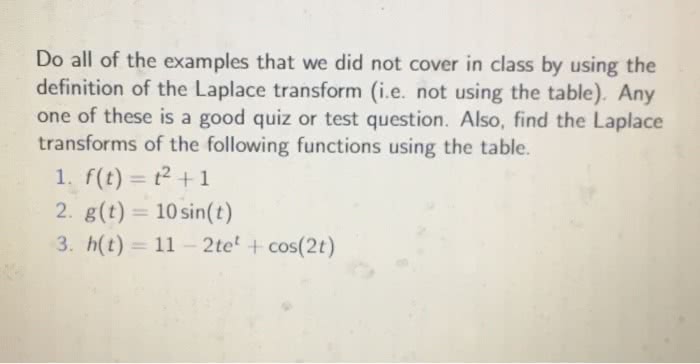18.03 Lecture Notes - Lecture 30: Frequency Response, Periodic Function, Lincoln Near-Earth Asteroid Research
Document Summary
Laplace transform v: poles and amplitude response: recap on pole diagram, stability, exponential signals, transfer and gain, fourier and laplace. [1] to recap: the kind of function f(s) that arises as a laplace transform can be understood, in broad terms, by giving the set of points at which it becomes infinite. Examples: the following f(s)"s all have pole diagram {2i,-2i} (a not zero) : [slide] F(s) f(t) a/(s^2+4) (a/2) sin(2t) as/(s^2+4) a cos(2t) e^{-bs}/(s^2+4) cos_b(2t) They oscillate with circular frequency 2 . They may grow or shink, but less than exponentially. These features are common to all functions f(t) such that f(s) has this pole diagram. Pole diagram {2i,-2i,1} : any of the above plus (c not zero) F(s) f(t) c/(s-1) c e^t + c/(s-1)^2 c t e^t + and many other examples. All these functions f(t) share some common features, for sufficiently large t : They grow as t ---> infinity "like e^t . "





